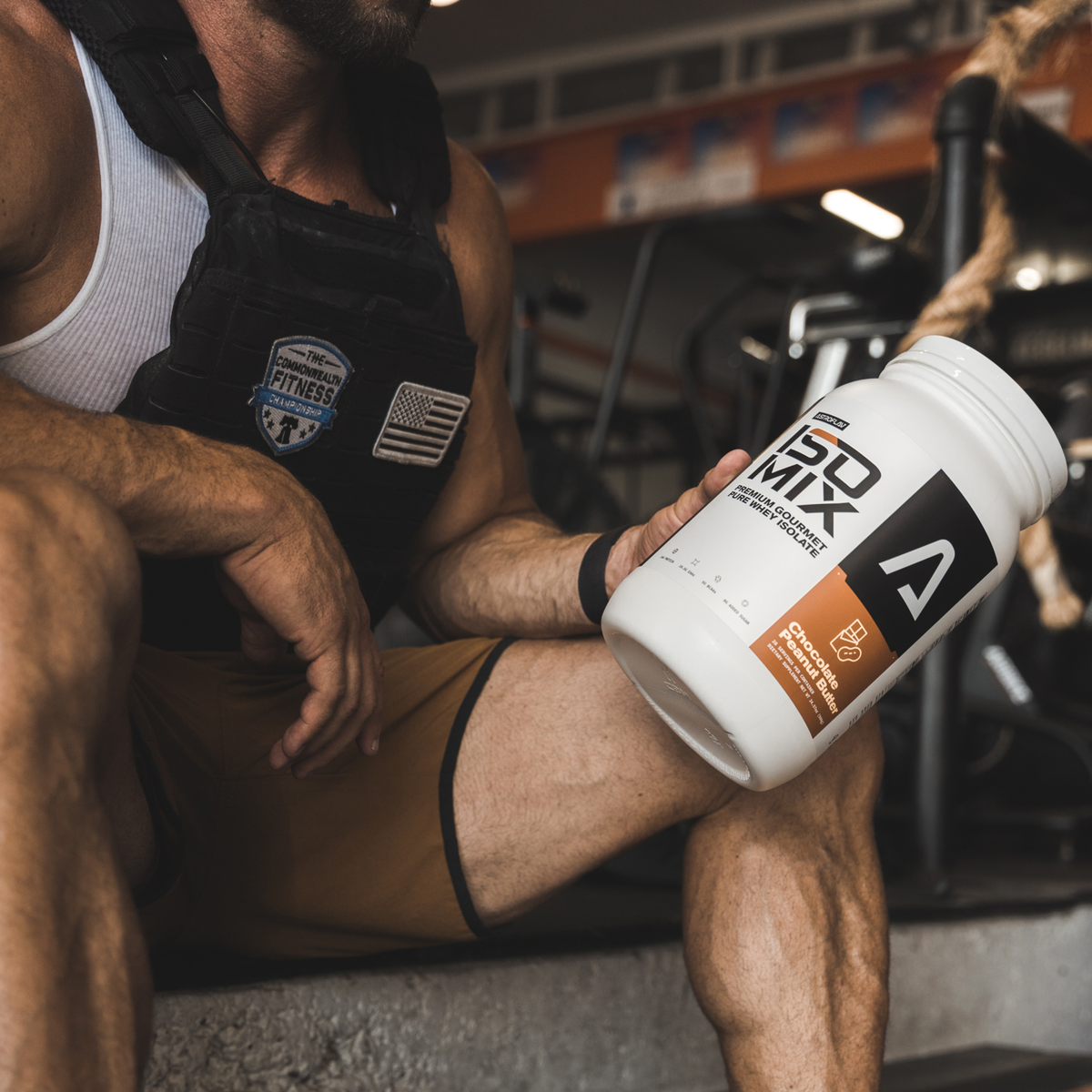
Top Exercises to Reduce Inflammation
In today's fast-paced world, maintaining optimal health is more important than ever. Chronic inflammation, often linked to various health issues, can be a significant barrier to well-being. Fortunately, incorporating the right exercises into your routine can play a crucial role in reducing inflammation and promoting overall health. In this article, we'll explore the top exercises that not only help in mitigating inflammation but also enhance your physical fitness. Whether you're a fitness enthusiast or just starting your journey towards a healthier lifestyle, these exercises will provide you with the tools you need to combat inflammation naturally!
How Does Exercise Reduce Inflammation?
Inflammation is a natural response by the body's immune system to injury, infection, or stress. It serves as a protective mechanism, helping to repair damaged tissues and fight off pathogens. However, chronic inflammation can have detrimental effects on overall health and athletic performance.
Exercise is widely celebrated for its numerous health benefits, but one of its lesser-known advantages is its ability to reduce inflammation in the body. Inflammation, can become chronic and lead to various health problems, including heart disease, diabetes, and arthritis.
Engaging in regular physical activity helps to modulate the body's inflammatory response by lowering levels of pro-inflammatory markers and boosting the production of anti-inflammatory substances. This physiological shift not only alleviates existing inflammation but also fortifies the body against future inflammatory conditions.
Furthermore, exercise reduces inflammation through several other key mechanisms. It boosts the production of anti-inflammatory cytokines, reduces visceral fat (a major source of pro-inflammatory substances), and enhances blood circulation, which aids in tissue repair. Additionally, exercise also increases antioxidant levels, reducing oxidative stress and preventing cellular damage. By improving immune function and regulating stress hormones, exercise lowers overall inflammation, promoting better health and well-being.
Signs of Joint Inflammation
Recognizing the signs of joint inflammation is crucial for early intervention and effective management. Common indicators include:
-
Pain: Persistent or intermittent pain in the affected joint, often worsening with movement or pressure.
-
Swelling: Noticeable puffiness or enlargement around the joint area, which may be accompanied by warmth.
-
Redness: A reddish hue on the skin over the inflamed joint, indicating increased blood flow.
-
Stiffness: Reduced range of motion and difficulty moving the joint, particularly after periods of inactivity.
-
Heat: The affected joint may feel warmer than surrounding areas, a result of increased blood flow and metabolic activity.
-
Tenderness: Sensitivity to touch or pressure on the joint, making everyday activities uncomfortable.
These symptoms can vary in intensity and may be indicative of underlying conditions such as arthritis, bursitis, or tendonitis. If you experience any of these signs, consulting a healthcare professional is advisable for accurate diagnosis and treatment!
Who Can Benefit From Anti-Inflammatory Exercises?
Anti-inflammatory exercises offer a wide range of benefits that can be enjoyed by almost everyone, regardless of age or fitness level. These exercises are particularly advantageous for:
-
Individuals with Chronic Conditions: People suffering from conditions such as arthritis, fibromyalgia, and inflammatory bowel disease often experience reduced inflammation and pain relief through regular, gentle exercise.
-
Older Adults: As we age, our bodies become more susceptible to chronic inflammation. Incorporating anti-inflammatory exercises can help maintain mobility, reduce joint pain, and enhance overall quality of life for older adults.
-
Athletes and Active Individuals: Regular training can sometimes lead to inflammation and overuse injuries. Anti-inflammatory exercises aid in recovery, reduce muscle soreness, and prevent injuries.
-
People with Sedentary Lifestyles: Those who spend long periods sitting or inactive can benefit from anti-inflammatory exercises to combat the adverse effects of a sedentary lifestyle, such as stiffness and joint pain.
-
Individuals Under Stress: Chronic stress can lead to increased inflammation in the body. Engaging in anti-inflammatory exercises, such as yoga or tai chi, can help manage stress and reduce its inflammatory impact.
Regular participation in anti-inflammatory exercises promotes better circulation, enhanced immune function, and a balanced inflammatory response, contributing to overall health and well-being. Whether you're managing a chronic condition or simply looking to improve your overall health, anti-inflammatory exercises can provide significant benefits, making them a valuable addition to any fitness routine.

Exercises to Reduce Inflammation:
Walking
Walking is a simple and effective way to reduce inflammation in the body. Regular walking enhances circulation, helping to deliver oxygen and nutrients to tissues more efficiently, which aids in reducing swelling and promoting healing. It also helps lower visceral fat, a source of pro-inflammatory substances, and reduces stress levels, thereby decreasing the production of inflammation-promoting cortisol.
Additionally, walking boosts the production of anti-inflammatory cytokines, balancing the body's inflammatory response. By incorporating walking into your daily routine, you can significantly lower inflammation and improve overall health.
Yoga
Yoga is a powerful practice for reducing inflammation, thanks to its combination of physical movement, breath control, and stress reduction. The gentle stretching and strengthening exercises in yoga improve circulation and muscle function, helping to alleviate joint stiffness and pain. Additionally, the mindfulness and deep breathing techniques inherent in yoga reduce stress hormones like cortisol, which can contribute to chronic inflammation. By incorporating regular yoga sessions into your routine, you can effectively lower inflammation and enhance overall well-being.
Bodyweight Exercises
Bodyweight exercises offer a convenient and effective way to combat inflammation. By engaging in activities like push-ups, squats, and lunges, you not only strengthen muscles but also stimulate blood flow, aiding in the removal of inflammatory byproducts. These exercises promote the production of anti-inflammatory cytokines while reducing visceral fat, a key contributor to inflammation. Plus, bodyweight workouts can be tailored to any fitness level, making them accessible to everyone seeking to lower inflammation and improve their health.
Mobility Exercises
Incorporating mobility exercises into your routine can be a powerful strategy for reducing inflammation and improving overall joint health. These exercises focus on increasing flexibility, range of motion, and joint stability, which can help alleviate stiffness and discomfort associated with inflammation. By gently moving joints through their full range of motion, mobility exercises promote better circulation, facilitating the removal of inflammatory substances and promoting tissue repair.
Additionally, maintaining optimal joint mobility can prevent compensatory movements that may exacerbate inflammation in surrounding tissues. Including regular mobility exercises in your routine can be a valuable tool in managing inflammation and enhancing your overall well-being.
Biking/Cycling
Biking and cycling are not only enjoyable outdoor activities but also effective ways to reduce inflammation in the body. The rhythmic motion of pedaling increases blood flow, promoting the delivery of oxygen and nutrients to tissues while flushing out inflammatory byproducts. Regular cycling also strengthens muscles and improves joint mobility, reducing the risk of inflammation-related discomfort.
Furthermore, biking can be a low-impact exercise option, making it accessible to individuals with joint issues or other limitations. By incorporating biking into your routine, you can experience the anti-inflammatory benefits while enjoying the great outdoors.
Swimming
Swimming offers a unique opportunity to reduce inflammation while enjoying a full-body workout. The buoyancy of water reduces stress on joints, making it an ideal exercise for individuals with arthritis or other inflammatory conditions. The resistance provided by water enhances muscle strength and endurance while promoting flexibility and joint mobility, all of which contribute to reducing inflammation. Additionally, the rhythmic nature of swimming strokes combined with controlled breathing can help lower stress levels, further mitigating inflammation. By making swimming a regular part of your fitness routine, you can experience its anti-inflammatory benefits while enjoying a refreshing and invigorating workout.
Turmeric for Inflammation & Joint Pain
Inflammation and joint pain can significantly impede exercise performance and overall physical well-being, often causing discomfort, stiffness, and reduced mobility. Chronic inflammation, triggered by factors such as intense physical activity, poor diet, and underlying health conditions, can exacerbate joint pain and hinder recovery, leading to prolonged discomfort and decreased exercise tolerance. Fortunately, turmeric, with its active compound curcumin, offers a natural solution to combat inflammation and alleviate joint pain.
Curcumin has been extensively studied for its potent anti-inflammatory and antioxidant properties, which can help modulate the body's inflammatory response and reduce the production of pro-inflammatory molecules that contribute to joint inflammation. By targeting multiple pathways involved in inflammation, curcumin helps mitigate joint pain, swelling, and stiffness, allowing individuals to move more freely and engage in physical activity with greater ease.
Moreover, curcumin's ability to support joint health by maintaining cartilage integrity and promoting overall joint function further enhances its efficacy in alleviating joint pain and improving exercise performance. Incorporating turmeric supplements into your daily routine can provide a convenient and effective way to harness the anti-inflammatory benefits of curcumin, supporting joint health and optimizing exercise performance for individuals seeking relief from inflammation and joint pain.
Inflammatory Health
Inflammatory Health from AstroFlav is a carefully crafted supplement formulated with key ingredients known for their anti-inflammatory properties.
This supplement includes turmeric extract (curcumin) and boswellia serrata extract, which act as powerful antioxidants, easing joint pain and inflammation. These ingredients work synergistically to reduce inflammation and support joint function, providing relief for those struggling with discomfort.
MicroActive Curcumin®, featured in AstroFlav's Inflammatory Health, offers a unique and synergistic combination that goes beyond merely addressing joint issues. This advanced formulation contributes to an improved inflammatory response, leading to positive effects on cardiovascular health, gut function, immunity, and post-physical activity recovery.
The Bottom Line:
Incorporating various forms of exercise into your routine, such as walking, yoga, bodyweight exercises, mobility exercises, biking, cycling, and swimming, can significantly reduce inflammation in the body. Whether it's the gentle stretching of yoga, the rhythmic motion of biking, or the resistance provided by swimming, each activity offers unique benefits for combating inflammation. By engaging in regular physical activity, you can improve circulation, reduce visceral fat, lower stress levels, and promote the production of anti-inflammatory cytokines, all contributing to better overall health and well-being. So, lace up your sneakers, roll out your yoga mat, or dive into the pool – your body will thank you for it!
RESOURCES
-
Mayo Clinic News Network. (2023). Mayo Clinic Q&A: Turmeric for healthier diet, pain relief. Retrieved from https://newsnetwork.mayoclinic.org/discussion/mayo-clinic-q-and-a-turmeric-for-healthier-diet-pain-relief/#:~:text=Other%20research%20suggests%20that%20curcumin,joint%20swelling%20and%20morning%20stiffness.
-
Elite Orthopaedic. (n.d.). The Top 10 Exercises to Reduce Pain and Inflammation. Retrieved from https://www.eliteorthopaedic.com/blog/the-top-10-exercises-to-reduce-pain-and-inflammation




